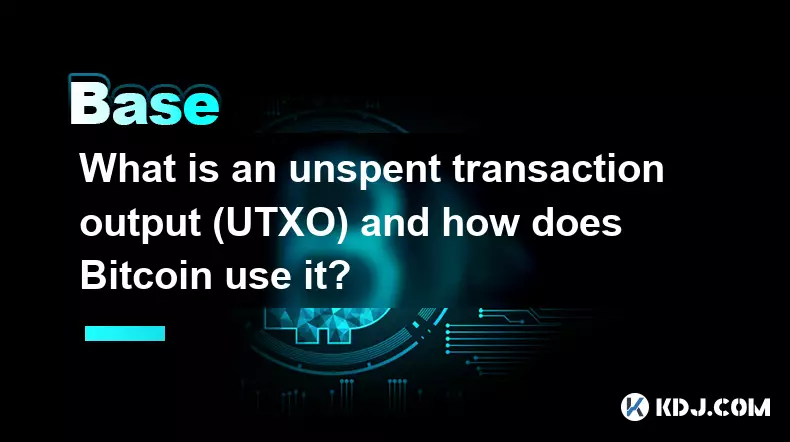-
 bitcoin
bitcoin $103128.103252 USD
-3.33% -
 ethereum
ethereum $3437.127692 USD
-4.86% -
 tether
tether $0.999700 USD
-0.02% -
 xrp
xrp $2.403993 USD
-5.73% -
 bnb
bnb $961.374676 USD
-4.11% -
 solana
solana $154.938665 USD
-8.18% -
 usd-coin
usd-coin $1.000113 USD
0.03% -
 tron
tron $0.298122 USD
0.30% -
 dogecoin
dogecoin $0.172428 USD
-5.76% -
 cardano
cardano $0.557625 USD
-7.13% -
 hyperliquid
hyperliquid $38.740701 USD
-6.51% -
 chainlink
chainlink $15.306051 USD
-7.51% -
 bitcoin-cash
bitcoin-cash $507.558648 USD
-3.26% -
 stellar
stellar $0.281899 USD
-6.74% -
 unus-sed-leo
unus-sed-leo $9.241811 USD
0.57%
What is a cryptographic signature and how does it prove transaction ownership?
Cryptographic signatures in blockchain use private keys to prove transaction ownership without revealing the key, ensuring security, authenticity, and decentralization through math-based trust.
Nov 12, 2025 at 09:59 am

Understanding Cryptographic Signatures in Blockchain Transactions
1. A cryptographic signature is a mathematical mechanism used to verify the authenticity of digital messages or transactions. In the context of blockchain and cryptocurrency, it ensures that a transaction was indeed initiated by the rightful owner of a wallet. Each user possesses a private key, which acts as a unique secret code known only to them. When a transaction is created, this private key is used to generate a signature specific to that transaction.
2. The signature is not a static piece of data; it changes based on the content of the transaction itself. This means even if two transactions are sent from the same wallet, their signatures will differ if the amount, recipient, or timestamp varies. This dynamic nature prevents replay attacks and ensures each transaction is uniquely verifiable.
3. Once generated, the signature is attached to the transaction and broadcasted across the network. Nodes validating the transaction use the sender’s public key—which is openly available on the blockchain—to decrypt the signature and compare it against the transaction details. If they match, the transaction is confirmed as legitimate.
4. This process relies heavily on asymmetric cryptography, where the private and public keys are mathematically linked but cannot be derived from one another. It is computationally infeasible to reverse-engineer a private key from its corresponding public key or signature, making the system highly secure.
5. Because the signature proves knowledge of the private key without revealing it, users can authenticate transactions while maintaining complete control over their funds. No third party needs to intervene or store credentials, reinforcing the decentralized nature of cryptocurrencies.
How Transaction Ownership Is Proven Without Central Authorities
1. In traditional financial systems, ownership verification depends on centralized institutions like banks that maintain records and authorize transfers. In contrast, blockchain uses cryptographic signatures to establish ownership in a trustless environment. When a user signs a transaction with their private key, they are providing irrefutable proof that they consent to the transfer.
2. The network does not need to know who the person is—only that they possess the correct private key associated with the sending address. This enables pseudonymity while preserving security. Every participant can independently verify the validity of a transaction using publicly accessible information.
3. Digital signatures also prevent tampering. Any alteration to the transaction data after signing invalidates the signature. Validators immediately reject such modified transactions, ensuring data integrity across the ledger.
4. Since every node checks the signature before accepting a transaction into a block, consensus is achieved through cryptographic proof rather than institutional trust. This eliminates single points of failure and reduces reliance on intermediaries.
5. The immutability of the blockchain further strengthens ownership claims. Once confirmed, a transaction becomes part of an unchangeable record, and the signature serves as permanent evidence of authorization at the time of execution.
The Role of Elliptic Curve Cryptography in Signature Security
1. Most major blockchains, including Bitcoin and Ethereum, utilize Elliptic Curve Digital Signature Algorithm (ECDSA) for generating cryptographic signatures. ECDSA offers strong security with relatively short key lengths, making it efficient for decentralized networks.
2. An elliptic curve provides a foundation for creating key pairs that are easy to compute in one direction but extremely difficult to reverse. This asymmetry allows users to generate public keys from private ones securely, while preventing adversaries from deriving sensitive information.
3. During signing, ECDSA combines the private key with a hash of the transaction and a random nonce to produce two values: r and s. Together, these form the digital signature transmitted alongside the transaction.
4. Verification involves plugging the signature components, the transaction hash, and the public key into the elliptic curve equation. If the result matches a calculated point on the curve, the signature is valid. This mathematical consistency ensures reliability without exposing any secrets.
5. While ECDSA has proven robust, concerns about quantum computing advancements have prompted research into post-quantum alternatives. However, current implementations remain secure against classical computational attacks, protecting billions in digital assets daily.
Frequently Asked Questions
What happens if someone gains access to my private key?If your private key is compromised, the attacker can sign transactions on your behalf and drain your wallet. There is no way to recover funds once transferred, as the blockchain recognizes the signature as valid. Protecting your private key is paramount—never share it or store it insecurely.
Can two different transactions have the same cryptographic signature?No, because each signature incorporates a unique hash of the transaction data and often a random nonce. Even slight differences in input, such as timestamp or fee, produce entirely distinct signatures. Reusing the same nonce with the same private key can lead to exposure, so proper generation practices are critical.
Is a digital signature the same as a digital certificate?No. A digital signature refers to the cryptographic output used to authenticate a message or transaction. A digital certificate, typically used in web security, binds a public key to an identity via a trusted authority. Blockchains do not rely on certificates—they validate ownership purely through signatures and public-key cryptography.
Do all cryptocurrencies use the same type of signature algorithm?While many use ECDSA, some employ alternative schemes. For example, Monero uses EdDSA with the Ed25519 curve for enhanced privacy and performance. Newer protocols may experiment with Schnorr signatures or aggregate variants to improve scalability and efficiency. Algorithm choice impacts security, speed, and interoperability.
Disclaimer:info@kdj.com
The information provided is not trading advice. kdj.com does not assume any responsibility for any investments made based on the information provided in this article. Cryptocurrencies are highly volatile and it is highly recommended that you invest with caution after thorough research!
If you believe that the content used on this website infringes your copyright, please contact us immediately (info@kdj.com) and we will delete it promptly.
- XRP ETF Buzz and AI Altcoins: Navigating Crypto's Evolving Landscape
- 2025-11-13 03:00:01
- Dogecoin, Investor, Knowledge: Navigating the Meme Coin Mania in 2025
- 2025-11-13 00:40:00
- Mississippi Retailers and the Penny Predicament: What's a Cash Customer to Do?
- 2025-11-13 01:00:02
- Hyperliquid, Aster Whales, and Zero Knowledge Proof: A New Era of Crypto?
- 2025-11-13 01:20:01
- XRP vs. Crypto Presales: Can Digitap or LivLive Deliver a 100x Return?
- 2025-11-13 01:15:01
- Hedera, Regulated Assets, and Dual Token Flexibility: A New Era for Tokenization
- 2025-11-13 01:45:01
Related knowledge

What is the difference between a transparent and a shielded transaction?
Nov 10,2025 at 05:59pm
Understanding Transparent Transactions in Cryptocurrency1. Transparent transactions are the standard form of transaction on most public blockchains li...

What is a "crypto airdrop farmer" and what strategies do they use?
Nov 09,2025 at 03:39pm
What Is a Crypto Airdrop Farmer?1. A crypto airdrop farmer is an individual who actively participates in blockchain projects to qualify for free token...

What is an unspent transaction output (UTXO) and how does Bitcoin use it?
Nov 12,2025 at 01:40am
Understanding the Concept of Unspent Transaction Output (UTXO)1. An Unspent Transaction Output, commonly referred to as UTXO, is a fundamental compone...

How do you track a crypto portfolio across multiple wallets and chains?
Nov 12,2025 at 04:19pm
The Evolution of Decentralized Exchanges in the Crypto Ecosystem1. Decentralized exchanges (DEXs) have transformed how users trade digital assets by r...

How does a crypto insurance protocol work?
Nov 08,2025 at 12:39am
Understanding Crypto Insurance Protocols1. A crypto insurance protocol operates by offering financial protection against losses incurred from digital ...

What is token composability and why is it called "DeFi Legos"?
Nov 09,2025 at 06:39am
Bitcoin's Role in Decentralized Finance1. Bitcoin remains the cornerstone of decentralized finance, serving as a benchmark for value and trustlessness...

What is the difference between a transparent and a shielded transaction?
Nov 10,2025 at 05:59pm
Understanding Transparent Transactions in Cryptocurrency1. Transparent transactions are the standard form of transaction on most public blockchains li...

What is a "crypto airdrop farmer" and what strategies do they use?
Nov 09,2025 at 03:39pm
What Is a Crypto Airdrop Farmer?1. A crypto airdrop farmer is an individual who actively participates in blockchain projects to qualify for free token...

What is an unspent transaction output (UTXO) and how does Bitcoin use it?
Nov 12,2025 at 01:40am
Understanding the Concept of Unspent Transaction Output (UTXO)1. An Unspent Transaction Output, commonly referred to as UTXO, is a fundamental compone...

How do you track a crypto portfolio across multiple wallets and chains?
Nov 12,2025 at 04:19pm
The Evolution of Decentralized Exchanges in the Crypto Ecosystem1. Decentralized exchanges (DEXs) have transformed how users trade digital assets by r...

How does a crypto insurance protocol work?
Nov 08,2025 at 12:39am
Understanding Crypto Insurance Protocols1. A crypto insurance protocol operates by offering financial protection against losses incurred from digital ...

What is token composability and why is it called "DeFi Legos"?
Nov 09,2025 at 06:39am
Bitcoin's Role in Decentralized Finance1. Bitcoin remains the cornerstone of decentralized finance, serving as a benchmark for value and trustlessness...
See all articles










































































